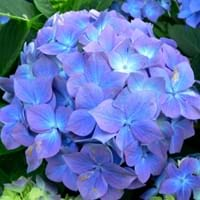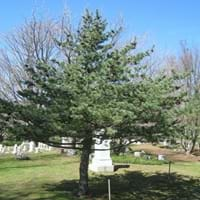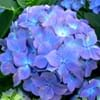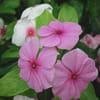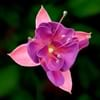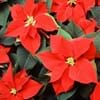Life Span
Perennial
Perennial
Type
Shrubs
Needled or Scaled Evergreen
Origin
China, Indonesia, Japan, Korea, The Hiamalayas
Japan
Types
Bigleaf hydrangea, Hortensia, Smooth hydrangea, Oakleaf hydrangea, Annabelle
Not Available
Habitat
Forest margins, Hillside, Woods
low mountains, Mountain Slopes, Mountain tops, Mountains
USDA Hardiness Zone
3-9
6-9
Sunset Zone
A3, 1a, 1b, 2a, 2b, 3a, 3b, 4, 5, 6, 7, 8, 9, 10, 11, 12, 13, 14, 15, 16, 17, 18, 19, 20, 21
2a, 2b, 3a, 3b, 4, 5, 6, 7, 8, 9, 14, 15, 16, 17, 18, 19, 20, 21, 22, 23, 24
Habit
Oval or Rounded
Spreading
Flower Color
Blue, Dark Purple, Light Purple, Red, White
Non Flowering Plant
Flower Color Modifier
Not Available
Bicolor
Fruit Color
Not Available
Brown, Tan
Leaf Color in Spring
Green
Green, Blue Green
Leaf Color in Summer
Green, Dark Green
Green, Blue Green
Leaf Color in Fall
Dark Green, Yellow, Yellow green
Green, Blue Green
Leaf Color in Winter
Not Available
Green, Blue Green
Leaf Shape
Oblovate
Subulate
Plant Season
Early Spring, Late Autumn
Spring, Summer, Fall, Winter
Sunlight
Full Sun
Full Sun, Partial Sun
Type of Soil
Light
Loam, Sand
The pH of Soil
Acidic
Acidic, Neutral
Soil Drainage
Well drained
Well drained
Bloom Time
Spring, Summer
Fall, Spring, Summer
Tolerances
Not Available
Drought
Where to Plant?
Ground, Pot
Ground
How to Plant?
Seedlings, Stem Planting
Seedlings
Plant Maintenance
Medium
Medium
Watering Requirements
Keep the ground moist but not water-logged, Requires regular watering, Use and maintain water-efficient soaker hoses, Water twice a day in the initial period
Do not water frequently, Needs less watering
In Summer
Lots of watering
Lots of watering
In Spring
Moderate
Moderate
In Winter
Average Water
Average Water
Soil pH
Acidic
Acidic, Neutral
Soil Type
Light
Loam, Sand
Soil Drainage Capacity
Well drained
Well drained
Sun Exposure
Full Sun
Full Sun, Partial Sun
Pruning
Cut or pinch the stems, Do not prune during shooting season, Prune lower leaves, Prune to stimulate growth, Remove dead or diseased plant parts
Remove damaged leaves, Remove dead branches, Remove dead leaves
Fertilizers
All-Purpose Liquid Fertilizer
All-Purpose Liquid Fertilizer, Apply N-P-K
Pests and Diseases
Anthracnose, Cercospora leaf spot, Mushroom root rot, Powdery mildew
Blight, Mealybugs, Red blotch, Sawfly Larvae, Scale insects
Plant Tolerance
Drought
Deer resistant, Drought, Rabbit
Flower Petal Number
Single
Single
Fragrant Bark/Stem
No
Yes
Foliage Texture
Coarse
Fine
Foliage Sheen
Matte
Not Available
Attracts
Bees, Flies
Sawfly, White Pine Weevil
Allergy
Chest tightness, Diarrhea, Dizziness, Nausea, Vomiting
Not Available
Aesthetic Uses
Showy Purposes
Bonsai, Borders
Beauty Benefits
Not Available
Not Available
Environmental Uses
Air purification
Air purification
Medicinal Uses
Fever, Kidney problems, Urinary tract problems
Cold, Cough, Diuretic, Vermifuge
Part of Plant Used
Flowers, Root
Seeds
Other Uses
Not Available
Herbicide
Used As Indoor Plant
No
No
Used As Outdoor Plant
Yes
Yes
Garden Design
Not Available
Feature Plant, Shade Trees, Street Trees, Topiary, Bonsai, Espalier
Botanical Name
Hydrangea
PINUS parviflora
Common Name
Hydrangea or hortensia
five-needle pine
Japanese five-needle pine
In Hindi
Hydrangea
Japanese White Pine
In German
Hortensie
Japanische White Pine
In French
Hortensia
Pin blanc du Japon
In Spanish
Hortensia
Pino blanco japonés
In Greek
υδραγεία
Ιαπωνικά White Pine
In Portuguese
Hortênsia
Japanese White Pine
In Polish
Hortensja
Japoński White Pine
In Latin
Hibiscus
Pine Italica
Phylum
Magnoliophyta
Tracheophyta
Class
Magnoliopsida
Pinopsida
Family
Hydrangeaceae
Pinaceae
Clade
Not Available
Not Available
Tribe
Not Available
Not Available
Subfamily
Not Available
Not Available
Number of Species
Not Available
Properties of Hydrangea and Japanese White Pine
Wondering what are the properties of Hydrangea and Japanese White Pine? We provide you with everything About Hydrangea and Japanese White Pine. Hydrangea doesn't have thorns and Japanese White Pine doesn't have thorns. Also Hydrangea does not have fragrant flowers. Hydrangea has allergic reactions like Chest tightness, Diarrhea, Dizziness, Nausea and Vomiting and Japanese White Pine has allergic reactions like Chest tightness, Diarrhea, Dizziness, Nausea and Vomiting. Compare all the properties and characteristics of these two plants. Find out which of these plant can be used as indoor plant. If you are interested to decorate your house and garden, find out aesthetic uses, compare them and select the plant which will beautify your surrounding. Along with beautification, try comparing medicinal and edible uses of Hydrangea and Japanese White Pine and you can choose the plant having best and most benefits.
Season and Care of Hydrangea and Japanese White Pine
Season and care of Hydrangea and Japanese White Pine is important to know. While considering everything about Hydrangea and Japanese White Pine Care, growing season is an essential factor. Hydrangea season is Early Spring and Late Autumn and Japanese White Pine season is Early Spring and Late Autumn. The type of soil for Hydrangea is Light and for Japanese White Pine is Loam, Sand while the PH of soil for Hydrangea is Acidic and for Japanese White Pine is Acidic, Neutral.
Hydrangea and Japanese White Pine Physical Information
Hydrangea and Japanese White Pine physical information is very important for comparison. Hydrangea height is 4.92 cm and width 11.00 cm whereas Japanese White Pine height is 910.00 cm and width 610.00 cm. The color specification of Hydrangea and Japanese White Pine are as follows:
Hydrangea flower color: Blue, Dark Purple, Light Purple, Red and White
Hydrangea leaf color: Green
Japanese White Pine flower color: Non Flowering Plant
- Japanese White Pine leaf color: Green and Blue Green
Care of Hydrangea and Japanese White Pine
Care of Hydrangea and Japanese White Pine include pruning, fertilizers, watering etc. Hydrangea pruning is done Cut or pinch the stems, Do not prune during shooting season, Prune lower leaves, Prune to stimulate growth and Remove dead or diseased plant parts and Japanese White Pine pruning is done Remove damaged leaves, Remove dead branches and Remove dead leaves. In summer Hydrangea needs Lots of watering and in winter, it needs Average Water. Whereas, in summer Japanese White Pine needs Lots of watering and in winter, it needs Average Water.
